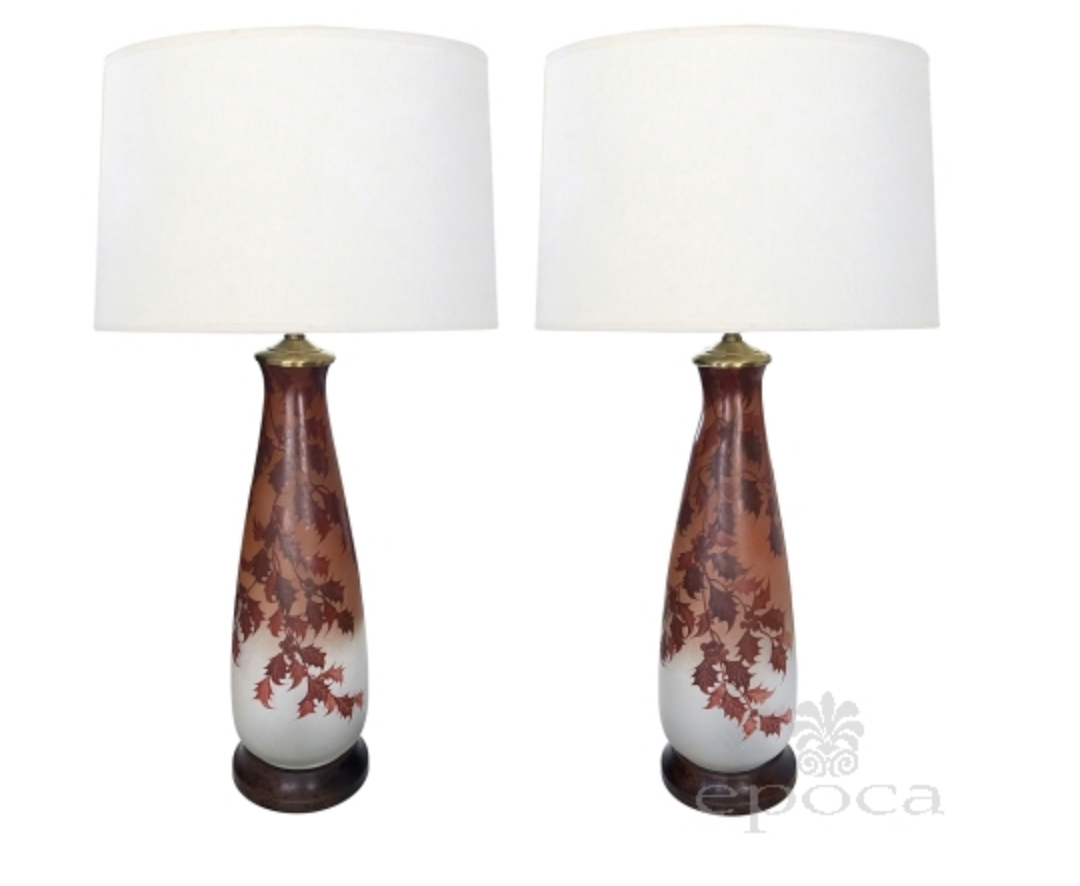San Francisco Fall Show Dealer Profile: Epoca
At Epoca, Red glaze West German Roth Keramik vases punctuate an American mid-century walnut dressing cabinet by John Widdicomb
San Francisco Fall Show chair and designer Suzanne Tucker of Tucker & Marks places antiques in each of her projects. "For me, antiques give a room soul. There do not have to be many antiques, and they do not all need to be the finest examples. But the rich patina of old wood, painted finishes, or burnished metals gives a lovely juxtaposition to what is new. It can make a room more interesting, balanced, and unique," she says.
Long-time exhibitor Eric Petsinger of SOMA's Epoca agrees and mingles antiques with 20th-century classics in his inventory. The Pittsburgh native advises clients, "Mix it up! Go ahead, put that shapely French rococo armchair next to a sleek John Widdicomb sofa, and see how they bring out each other's beauty." Eric, who opened his business in 2003, is known for his eloquent event-themed booths. Here is a guess at what might appear for this year's Ruby Jubilee show.
This pair of French bottle-form vases, now mounted as lamps, features an enameled pattern of cascading holly bush stems over a satin finished glass. The decorating workshop Leune produced them in 1925. Its artisans utilized blanks from Daum Frères, the Nancy glass-making company founded in 1875. Auguste-Claude Heiligenstein was Leune's art designer from 1923 to 1926, and Paul Daum, the grandson of Daum Glass's founder, directed it in the 1920s. While Daum continues today, Leune ceased operations in 1932.
Utilitarian objects from yesterday can make the most beautiful furnishings of today when repurposed; Epoca did this with an early 20th-century round red-painted foundry mold now mounted as a bold mirror. In the past, Eric reimagined a vintage cast iron dumbwaiter assembly as an industrial-styled table base. Jim Gallagher of Garden Court Antiques, who shares space with Epoca, is equally inventive. He took a pair of French 19th-century chasse-roues or wheel chasers, architectural elements that acted as Parisian traffic bollards, and made them into chic lamps.
And here are Italian Rococo-style armchairs to pair with a sleek John Widdicomb sofa that Eric mentioned. Each painted and parcel gilt chair features a cartouche-shaped back, scrolled arms, scalloped apron, and cabriole legs. While they are not period since they are circa 1850 and the Rococo period was from 1730 to 1770, they reflect the Rococo Revival of the 19th century. The revival was in reaction to neoclassicism and an expression of the Romantic Era. During the 1920s to '50s, the Rococo style would see another reinterpretation with Hollywood Regency.




